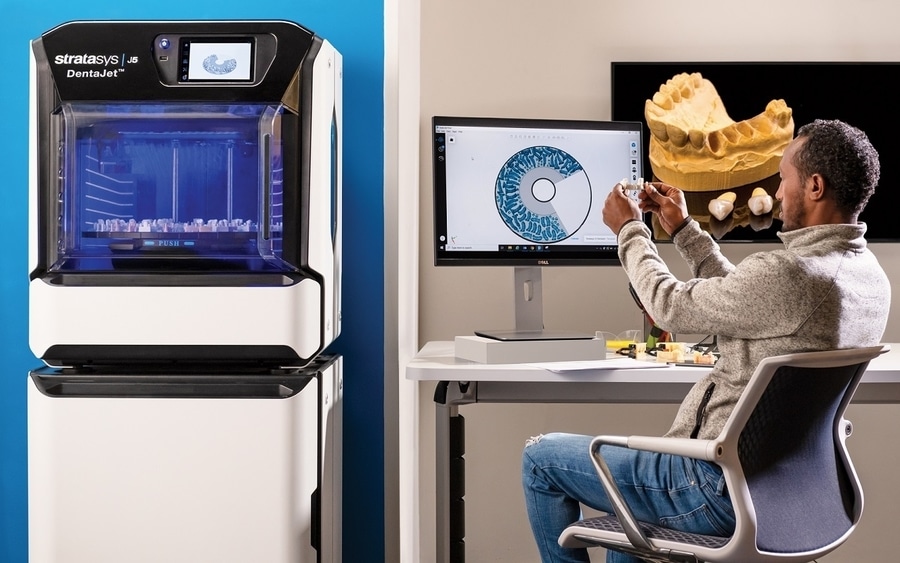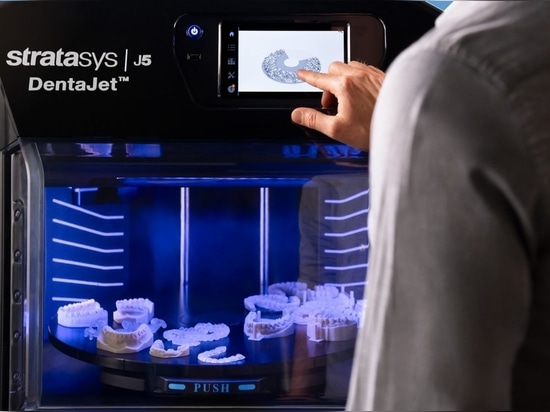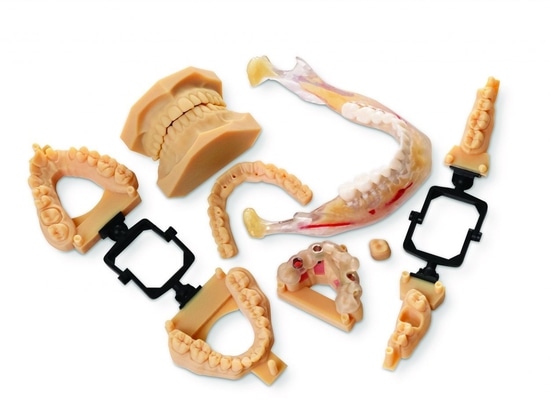
#Product Trends
Stratasys’ J5 DentaJet: A Big Step Towards Full Digital Transformation in Dentistry
Stratasys’ new J5 DentaJet multi-material 3D printer combines automation with accuracy and can do the job of multiple other machines on its own.
It is hard to believe at first that the dental products we see in this picture gallery are not in some way painted, polished or hand finished after being printed with 3D technology. Developed by 3D printer manufacturer Stratasys specifically for dental applications, the J5 DentaJet is a multi-material PolyJet 3D machine capable of simultaneously combining up to five different biocompatible resins when printing high-precision dental parts.
Eric Erickson, Healthcare Director of Stratasys for Europe and Asia, explained:
“Printing in multiple colors and materials at the same time is the most innovative aspect of this printer. It allows for combinations of thousands of colors as well as hard and soft materials, including biocompatible ones.”
Focused on fast and efficient model printing, the J5 DentaJet features maximum dimensions of 140 x 200 x 190mm with a footprint area of 1,174cm². Its rotating print platform provides the largest tray-to-footprint ratio on the market, allowing prosthetics laboratories to create as many as 41 implant cases a day with only two trays. According to Stratasys, this is at least five times as many polymer dental components as machines from other competitors.
Its automated optimization of the positioning of items being made also makes maximum use of tray space and ensures that not only can more products be created more quickly, but also several different products at the same time. In other words, crowns and bridge devices can be built on the same tray as implants. This in itself is challenging enough, since it consists of a simultaneous combination of three completely different materials; an opaque rigid model, a soft gingival mask and a clear surgical guide. Erickson said:
“The process becomes much quicker than if the machine had to speed up and down to do its job.”
In order to appreciate the impact of the 3D revolution in this field, it is important to understand how the manufacturing of any dental product begins. Traditionally, a physical impression of a patient’s mouth is made with dental putty. Instead, the digitization of this process begins with the use of digital scanners—basically cameras at the end of a probe.
Specialized software then stitches all the images together into a full color, 3D analysis of the patient’s mouth, while the traditional method necessitates sending the impressions to laboratories for the laborious process of casting plaster models. The next step in that process would be the manual building of the products using different types of wax materials.
With the digitized method, however, the measurement data of the patient’s mouth is processed by designCAD software for dentistry, which can design crowns, bridges or whatever else is needed; so the pieces can be made by 3D printers for despatch to dentists. Erickson noted:
“Not so long ago, 3D printing machines used for dentistry were at least as big as a large dinner table—very different compared to the J5 DentaJet which requires only 4.6 square feet of floor space.”
3D Printing Dentures and Artificial Teeth
Stratasys estimates the potential market for dental 3D printing to be around one billion dollars, targeting the J5 DentaJet at the niche market of high-volume, realistically priced models. There is also certainly much more to come in terms of technology. He said:
“In the near future, it might be possible to manufacture products that remain permanently fitted in the mouth, like dentures or artificial teeth that are biocompatible and bio-mechanically correct. The goal is to actually mimic human tissue, including those for parts of the body other than the mouth.”







